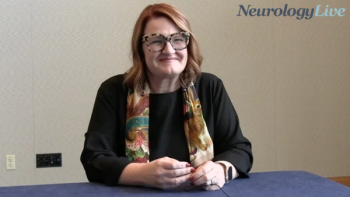
FDA Clears IND to Study Gene Therapy CAP-002 in STXBP1 Developmental Epileptic Encephalopathy
Key Takeaways
- CAP-002 is a novel gene therapy for STXBP1-DEE, showing promise in preclinical studies with significant neuron transduction and a favorable safety profile.
- The SYNRGY trial will test CAP-002's potential to improve seizure control and developmental abnormalities in STXBP1-DEE patients.
FDA approves study to test Capsida's CAP-002 gene therapy for STXBP1-DEE, offering hope for improved seizure control and developmental outcomes in affected patients.
According to a new announcement, the FDA has cleared Capsida’s investigational new drug (IND) application to test CAP-002, an intravenously administered gene therapy, as a potential treatment for patients with syntaxin-binding protein 1 developmental and epileptic encephalopathy (STXBP1-DEE), a rare epileptic disorder impacting 1 in every 26,000 births globally.1
The agent, a wholly owned, first-in-class gene therapy, will be studied in a phase 1/2 trial dubbed SYNRGY, that will begin dosing in the third quarter of this year. CAP-002, manufactured through Capsida’s Good Manufacturing Practice (GMP) facility, is the first such treatment to enter human trials using an IV-administered, blood brain barrier-crossing engineered capsid that also is detargeted from off-target issues, such as liver and dorsal root ganglia.
CAP-002, which has previously received orphan drug designation from the FDA, showed promise in preclinical studies, resulting in transduction of more than 70% of neurons across critical brain area in non-human primates. In addition, the NHP Good Laboratory Practice toxicology study showed a well-tolerated safety profile with no adverse histopathology, further supporting its development. All told, Capsida believes this therapy may impact expression of STXBP1 to the point where patients experience significant improvements in seizure control, corrected developmental abnormalities, and enhancements in motor abnormalities.
"STXBP1-related disorders present devastating challenges in communication, development, motor function and seizures," Charlene Son Rigby, president and cofounder of STXBP1 foundation, said in a statement. "We are in dire need of targeted therapies that can improve the lives and functioning of our children and families."
The STXBP1 protein, present in all brain neurons and crucial for neurotransmission, has shown potential for treatment and even full correction of the disorder through gene supplementation in preclinical studies. These studies emphasize that rescuing neurological symptoms requires delivering STXBP1 to neurons across the brain at levels beyond those achievable by conventional serotypes like AAV9. Capsida conducted this research using a proprietary mouse model in collaboration with Mingshan Xue of Baylor College of Medicine and Texas Children's Hospital.
READ MORE:
"This is the first potentially disease-modifying treatment for STXBP1-DEE, and we are excited to be part of the SYNRGY clinical trial," Ingo Helbig, MD, pediatric neurologist and director of clinical research at the Center for Epilepsy and Neurodevelopmental Disorders at Children’s Hospital of Philadelphia, said in a statement.
To date, STXBP1 encephalopathy with epilepsy has been typically treated through antiseizure medications (ASM) such as phenobarbital, valproic acid, and vigabatrin. Besides CAP-002, there are a small handful of agents in development for STXBP1-related DEE, including Lundbeck’s bexicaserin (LP352) and BMB-101 by Bright Minds Biosciences. CAP-002 focuses on gene therapy to correct the underlying genetic defect of STXBP1-DEE, whereas bexicaserin and BMB-101 aim to modulate neurotransmitter systems to alleviate seizure activity.2
Bexicaserin is a selective serotonin 5-HT2C receptor being tested in various DEEs, including STXBp1-related disorders. The most notable trial is the ongoing DEEpOCEAN phase 3 study, which enrolls approximately 320 children and adults with DEEs to test the drug’s safety, efficacy, and tolerability. BMB-101 is another selective 5-HT2Ce receptor, designed to minimize receptor desensitization and development of tolerance. As of October 2023, this drug is in phase 2 trials for absence epilepsy and Pitt-Hopkins syndrome, phase 1 trials for Dravet syndrome, and preclinical research for Lennox-Gastaut syndrome.3
REFERENCES
1. Capsida Receives FDA IND Clearance for Its First-in-Class, IV-administered Gene Therapy for STXBP1 Developmental and Epileptic Encephalopathy. News release. Capsida Biotherapeutics. May 12, 2025. Accessed May 13, 2025. https://capsida.com/capsida-receives-fda-ind-clearance-for-its-first-in-class-iv-administered-gene-therapy-for-stxbp1-developmental-and-epileptic-encephalopathy/
2. Clinical Trials and Observational Studies. STXBP1 Disorders. Accessed May 13, 2025. https://www.stxbp1disorders.org/clinicaltrialsandresearch
3. BMB-101. Synapse. https://synapse.patsnap.com/drug/5f9c9ec925e648cdab118b9cd71dc86e. Accessed May 13, 2025.
Newsletter
Keep your finger on the pulse of neurology—subscribe to NeurologyLive for expert interviews, new data, and breakthrough treatment updates.


































